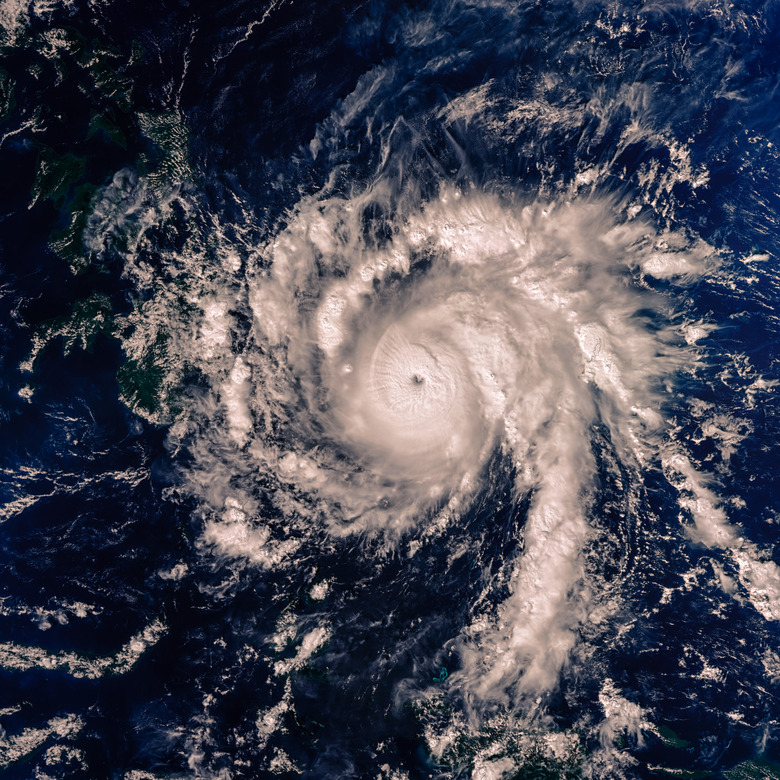School Projects On Cyclones
A cyclone occurs when winds circle around a region of low pressure. Tropical cyclone is the name usually given to hurricanes that occur in the Indian Ocean. Most large cyclones are centered on areas of low pressure. Cyclones move counterclockwise in the Northern Hemisphere and clockwise in the Southern Hemisphere. Cyclones, like hurricanes, are tracked by satellite systems and can be extremely destructive. There are several interesting projects on cyclones for a class.
Prepare for a Cyclone
Prepare for a Cyclone
Split your class into groups and assign each group a city or place. Make sure you include places that would be affected by tropical cyclones, such as Australia and southern India, as well as places in the United States that would be affected by hurricanes. Students should then determine what will be needed to cope with a cyclone, such as:
- planning
- medical care
- food distribution
- communications
- law enforcement
- cleanup
Students in each group should split up the tasks and write a list of what needs to be done in order to cope with the cyclone and rebuild afterward. For example, one student could draw up an evacuation plan, another could determine how to distribute food and water, and another could plan how to rescue and care for those made homeless. The plans could be compared to other projects on natural disasters such as earthquakes.
Blow a Hurricane
Blow a Hurricane
This project demonstrates how cyclones form. Students will learn that wind speed increases the height of ocean waves and that waves become higher in shallow water. You will need a rectangular baking dish, a flexible straw, water, a ruler and tape. Bend the straw into an L-shape, place it in the middle of one of the short sides of the baking dish so that the shorter end faces up and the longer end is about half an inch above the bottom of the dish. Tape the straw in place. Pour water in the dish to a level just below the straw. Blow into the straw, creating wind. Students mark the height of the wave on the outside of the dish. Repeat the activity, blowing harder. Students will see that the harder they blow, the higher the waves. Students can repeat the activity with more or less water in the dish, simulating shallower or deeper water.
Soda Bottle Cyclone
Soda Bottle Cyclone
See what the center of a cyclone looks like by creating one in a bottle. Take the caps off two clean, empty 2-liter soda bottles. Drill a 1/2-inch hole in the center of each cap. Seal the tops together, flat side to flat side, with a bead of silicon caulking. Screw one of the caps onto one of the bottles. Fill the second bottle about 3/4 full of water. Add a few drops of food coloring to make the water more visible. Screw the empty bottle onto the bottle containing water. Turn the bottles upside down. A vortex will form as the water drains into the lower bottle; this is similar to the center of a cyclone.
Write About a Cyclone
Write About a Cyclone
This is a good activity to use once students have studied cyclones and hurricanes. It can be used as a review of what they have learned. Read students an account of a cyclone or hurricane and its effects on a city or region. Students can then view news accounts or video footage of cyclones and the effects of cyclones. Students can write a story about a fictional cyclone. You can use different writing styles; for example, students could write a first-hand account, a news story or a play.
Cite This Article
MLA
Magloff, Lisa. "School Projects On Cyclones" sciencing.com, https://www.sciencing.com/school-projects-cyclones-7904786/. 22 November 2019.
APA
Magloff, Lisa. (2019, November 22). School Projects On Cyclones. sciencing.com. Retrieved from https://www.sciencing.com/school-projects-cyclones-7904786/
Chicago
Magloff, Lisa. School Projects On Cyclones last modified March 24, 2022. https://www.sciencing.com/school-projects-cyclones-7904786/
